All products featured are independently chosen by us. However, SoundGuys may receive a commission on orders placed through its retail links. See our ethics statement.
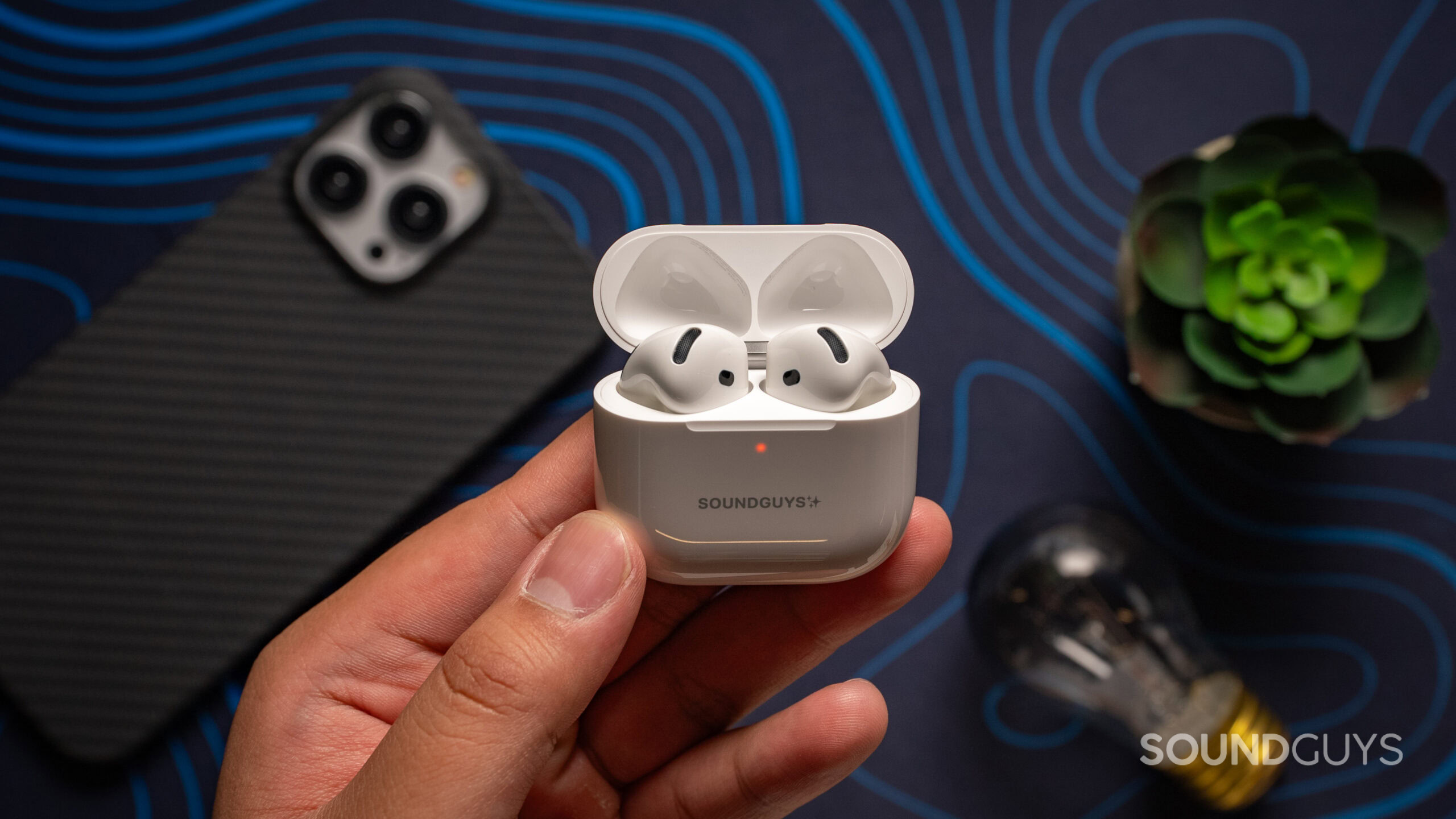
Apple AirPods 4 with Active Noise Cancellation review
July 2, 2025
Apple AirPods 4 with Active Noise Cancellation
For the first time, Apple has brought active noise cancelation (ANC) technology to the entry-level AirPods. When the AirPods 4 with Active Noise Cancellation were first announced, we had a few questions, to say the least — especially given that ANC earbuds generally require a good seal to perform well. We’ve seen others try, and fail, to bring ANC to unsealed earbuds. But has Apple succeeded where others haven’t? We took the new earbuds through the lab to find out.
- This article was updated on July 2, 2025 to address a firmware update.
- This article was updated on June 6, 2025, to update information.
- This article was updated on March 10, 2025, to update formatting.
- This article was updated on January 8, 2025, to note the Sony LinkBuds Fit as a good alternative.
- This review was published on September 20, 2024.
The AirPods 4 with Active Noise Cancellation are for people who don't like (or can't) wear sealed earbuds, and enjoy the Apple ecosystem. They are not for Android users.
What’s it like to use AirPods 4 with Active Noise Cancellation?
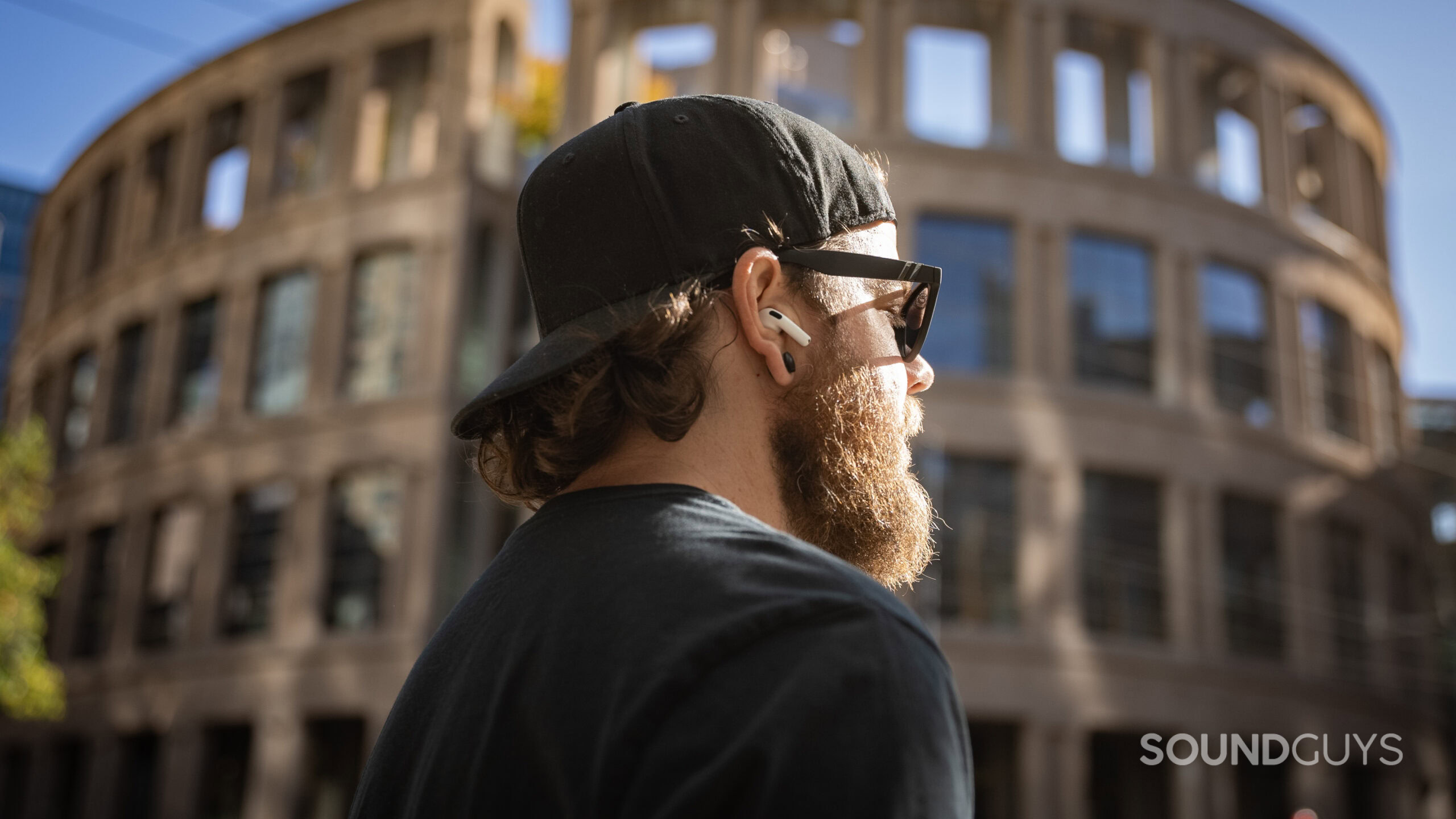
With every Apple AirPods release has come a slightly changed shape, and the AirPods 4 with Active Noise Cancellation are no different. Apple used a large dataset to project what would be the least problematic form for the new AirPods to take — though that misses the point entirely. If you had trouble wearing Apple AirPods before, you almost assuredly will still have the same problems with the AirPods 4 with Active Noise Cancellation.
Our team members have had vastly different experiences with the comfort of the AirPods 4. Some people in our team find the AirPods 4 very comfortable to wear for hours on end, while others find them painful after only a few minutes of wear time. For some of us, the AirPods 4 stay securely in place, while others had issues with earbuds falling out while moving around. This is to be expected, since all ears are different shapes and sizes.
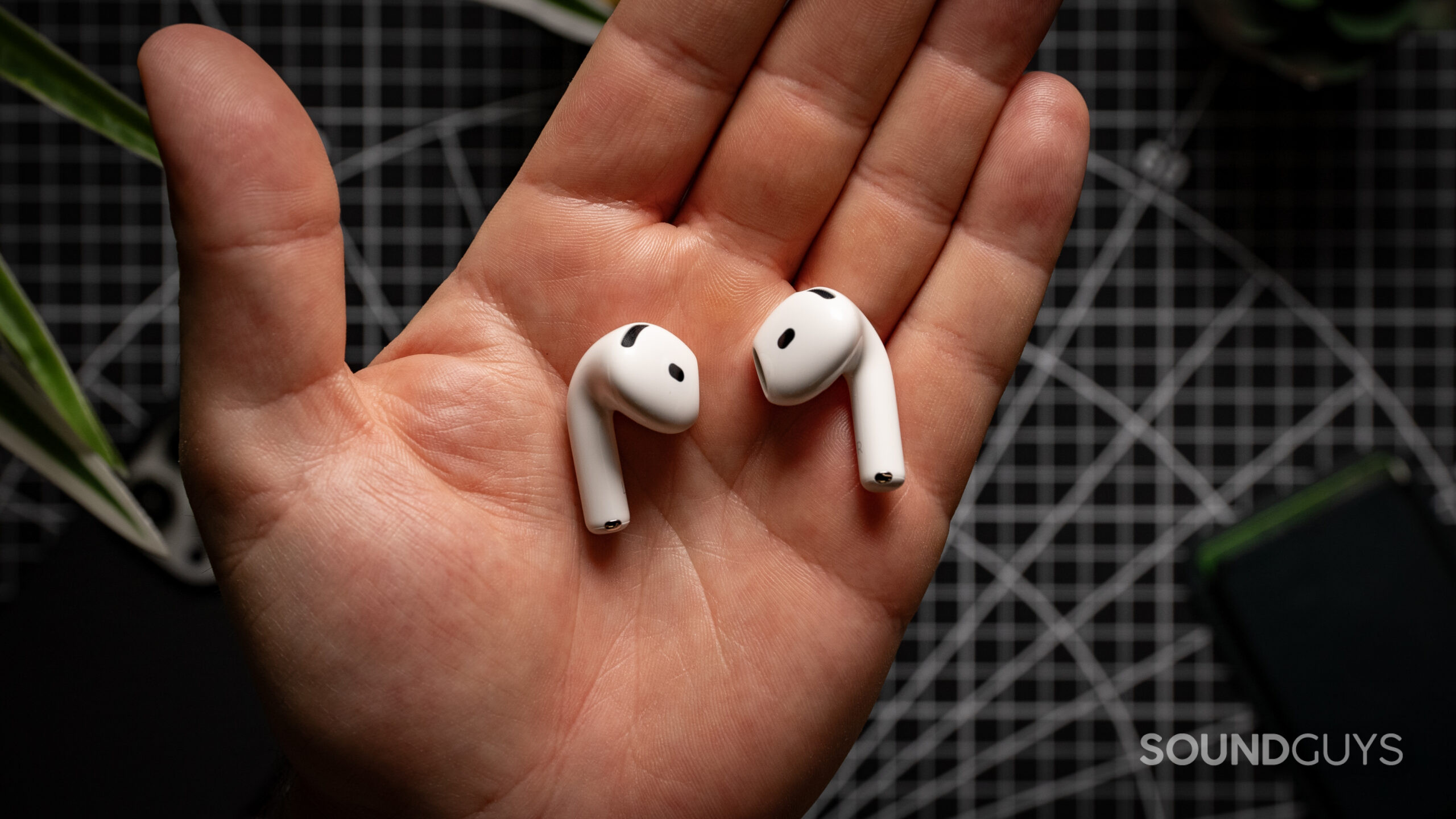
Just like the standard AirPods 4, the AirPods 4 with Active Noise Cancellation have an ingress protection rating of IP54, which means that you still shouldn’t use them in the shower. However, you could potentially use them in a workout — provided the fit is secure enough for that kind of strenuous activity.
Controlling the AirPods 4 with Active Noise Cancellation is as straightforward as it ever has been, and can be accomplished by pinching the indentation on the lollipop stem. The stem is a little bit smaller than on previous models, but still easy to use.
Additionally, you can now nod your head or shake it to give a nonverbal cue to Siri when it asks if you want to answer a call, hear a text, or do something with a notification.
| Action (stems) | Either earbud |
|---|---|
One tap | Play/pause |
Two taps | Skip forward |
Three taps | Previous track |
Press and hold | Siri |
"Hey Siri" | Change volume, request directions, playback control, receive messages, and more |
Nod or shake | Answer "yes" or "no" to Siri |
You’ll notice a key absence — the ability to adjust volume. Unlike the AirPods Pro 2, the AirPods 4 do not have swipe controls to adjust volume.
What are the iOS-specific software features like?
There’s no specific app for the AirPods 4 with Active Noise Cancellation, but rather you’ll find controls sprinkled throughout your operating system. Inside the Settings app, you can tweak the controls. In the Find My app, you can located your earbuds if you lose them. The charging case of the AirPods 4 with Active Noise Cancellation can also be tracked, and it has a speaker to play a tone to help you locate it. These case tracking features are not found on the standard AirPods 4.
If you’re a Spatial Audio fan, the AirPods 4 with Active Noise Cancellation support it, with the feature toggled from the Control Center on your device. You can listen to Dolby Atmos mixes if you have an Apple Music subscription, or you can use the “Spatialize Stereo” functionality to convert a stereo mix from Spotify or any other audio source. Alternatively, you can toggle on the Head Tracking mode, which simulates a single audio source in front of you.
The latest firmware version we’ve explored is 7E93, which purports to grant the user “bug fixes and other improvements” — but the performance does not appear to be much different than before.
How do the AirPods 4 with Active Noise Cancellation connect?

The AirPods 4 with Active Noise Cancellation connect to their source devices via Bluetooth 5.3 over AAC. Though there is no support for other codecs, there’s been a lot of work poured into AAC over the years to maximize its efficacy for audio listening. Consequently, it’s not as big of a problem as it once was. Just like it is for the other Apple AirPods offerings, the AirPods 4 with Active Noise Cancellation support connects to multiple devices — and multiple AirPods 4 with Active Noise Cancellation can connect to the same iOS device.
Though other competing earbuds are starting to offer a means to listen to wired sources with the charging case, the Apple AirPods — aside from the Max — of all stripes do not. You’re only going to be listening to wireless sources, which is a little disappointing — but less of a calamity than it used to be.
Assuming that you can't use iOS' fast pairing feature, you can manually pair the AirPods 4 with Active Noise Cancellation to Android or other devices by toggling the pairing state with a capacitive area on the front of the charging case.
- On your source device, open the Bluetooth menu.
- With the earbuds in the case, open the lid and double tap the front of the charging case to put the AirPods 4 in pairing mode. The indicator light should start flashing white.
- In the Bluetooth menu mentioned in step 1, hit "scan."
- Select the AirPods 4 with Active Noise Cancellation in the list of available devices.
How long does the AirPods 4 with Active Noise Cancellation battery last?
In our battery testing the AirPods 4 lasted 6 hours and 21 minutes of playback on a single charge, without noise canceling or transparency mode enabled. Using these modes will likely diminish the battery quicker. The charging case provides five extra charges, for a total battery life of up to 30 hours. That said, the battery life varies depending on listening modes, listening volume, etc.
Though the battery life for wireless earbuds tends to be on the short side, thus being a risk for premature cell degradation, Apple has a charging feature baked in to hopefully optimize each tiny cell’s operating life. Called Optimized Charging, the feature keeps the cells’ charge level at about 80% until it thinks you’re about to use the Apple AirPods, when it charges it to full. Doing this should put less strain on your AirPods 4 with Active Noise Cancellation.
You can power up the AirPods 4 with Active Noise Cancellation case in a variety of ways, including USB-C, standard Apple Watch chargers, Qi wireless charging mats, or MagSafe.
Five minutes of charging will allow you to have about an hour of listening time. Additionally, it takes about 90 minutes to fully charge the earbuds.
How well do the AirPods 4 with Active Noise Cancellation cancel noise?
As the AirPods 4 with Active Noise Cancellation are a set of unsealed earbuds, no matter what kind of fit you get, you can expect a rather middling level of ANC. This is expected, but it can be frustrating if you are prone to frequent areas with high noise. Because the fit can change, getting ideal positioning is not a guarantee — and that can mean that your results will vary wildly. Additionally, you can’t count on much passive isolation due to the unsealed design.
Loading chart ...
With an unassisted fit, the ANC actually does work as advertised — a much bigger feat than it might appear when compared to other earbuds. However, the hybrid ANC unit is able to cancel about 20dB of noise in the mids and highs, which will encompass most of the noises that will annoy you. Just be aware that the lowest lows have a tendency to make it all the way through.
The AirPods 4 with Active Noise Cancellation have two unique features regarding ambient noise control. The first is called Adaptive Audio, which automatically blends ANC with Transparency mode depending on the level of environmental noise around you. The second is called Conversation Awareness, which automatically lowers your music and activates Transparency mode when you start talking. We had mixed results with these, but on the whole, these modes are likely where we see ANC head in the future, as simply canceling every noise is only ideal in certain conditions.
No, only the AirPods Pro 2 have hearing aid functionality. Due to their ear tips, the AirPods Pro 2 are also a much better option for protecting your ears from noise-induced hearing loss.
How do the AirPods 4 with Active Noise Cancellation sound?
The actual sound quality of the AirPods 4 with Active Noise Cancellation is decent, though it may not be everyone’s cup of tea. Still, unsealed earbuds are tough to get right.
Reviewer’s notes
Editor’s note: this review uses a hover-enabled glossary to describe sound quality based on a consensus vocabulary. You can read about it here.
Objective Measurements
Loading chart ...
Because we don’t assist unsealed earbuds in our measurements, this might look a little more wonky than other outlets will show. However, we’re impressed that the AirPods 4 with Active Noise Cancellation work as well as they do. For example, though the sub-bass rolls off quite early, the treble extension and relative lack of wild emphasis swings is a good note to start on. The AirPods 4 with Active Noise Cancellation deviate from our preferences a bit in the upper bass region, presumably to help the low end out a bit assuming an imperfect fit.
There is that strange 2kHz overemphasis that makes some sibilant sounds a bit louder than the rest of your music, but in general, the highs are a bit underemphasized from 3kHz on up until 6kHz. It’s tough to predict how you’ll hear this, specifically, but in my listening this underemphasis didn’t seem to do much but make some sounds less clear. But I feel compelled to point out that your experience might not agree with ours.
Older listeners will appreciate the spike in the highest octave, as it has been observed to increase listener preference among those in the 35+ age bracket. It’s cool to see this feature, but younger listeners might elect to tamp this down a bit to meet their needs.
Multi-Dimensional Audio Quality Scores (MDAQS)
The chart below shows how the sound of the AirPods 4 with Active Noise Cancellation was assessed by the Multi-Dimensional Audio Quality Score (MDAQS) algorithm from HEAD acoustics. Scores are on a scale of 1-5, with 5 being “excellent,” and 1 being “poor.”
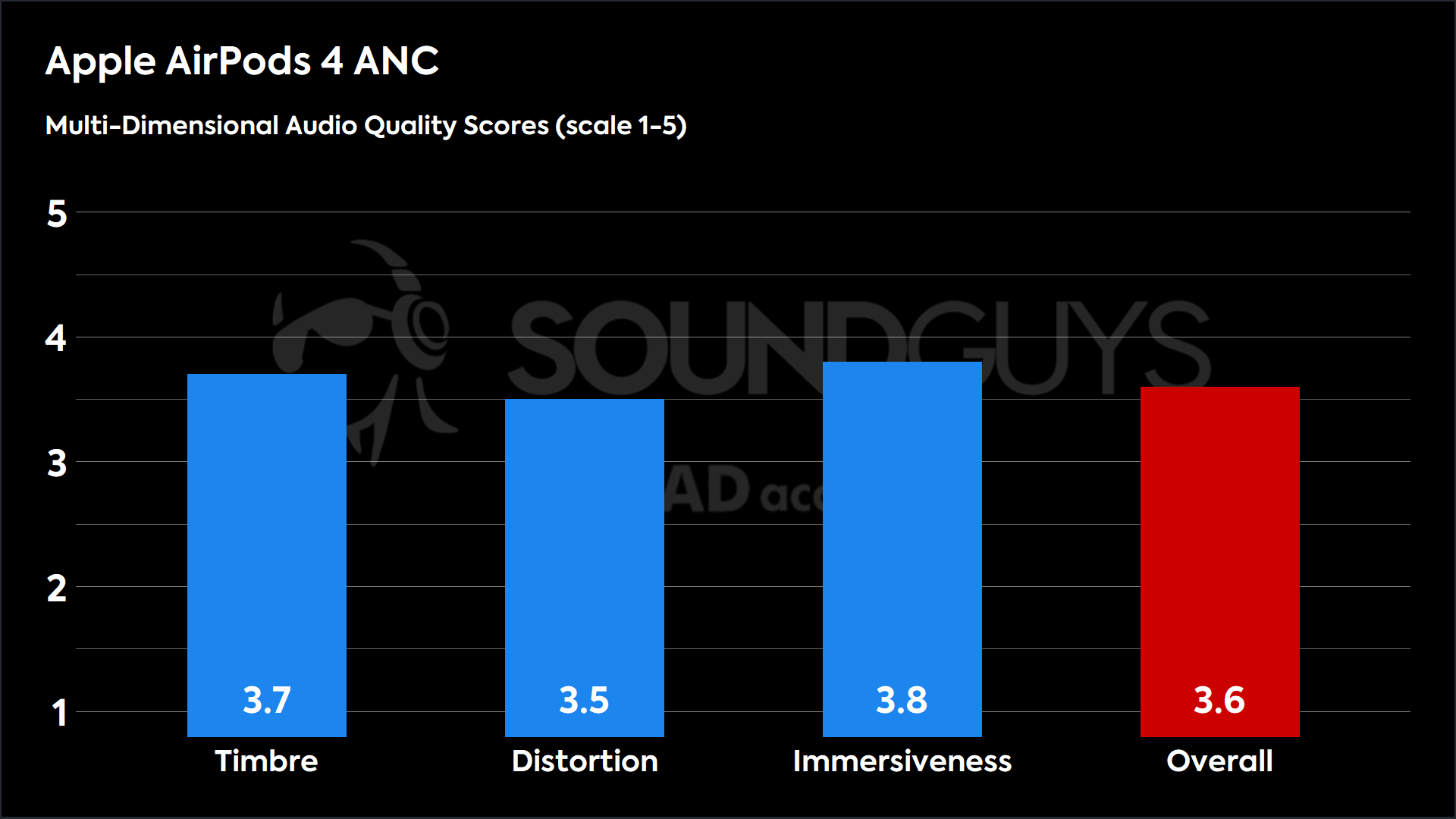
The overall mean opinion score (MOS) of the Apple AirPods 4 with Active Noise Cancellation is 3.6, which simply means most people will be okay with the sound. This is far from a poor result, especially for unsealed earbuds. There’s no one score to point to that would account for the low score, as each MOS was very similar. The lack of sub-bass really hurts some earbuds, and that seems to be the case here. If you’re wondering why these earbuds score worse than the last generation, it’s because with a different sound comes different result. It’s not “better” or “worse,” just “different,” mainly.
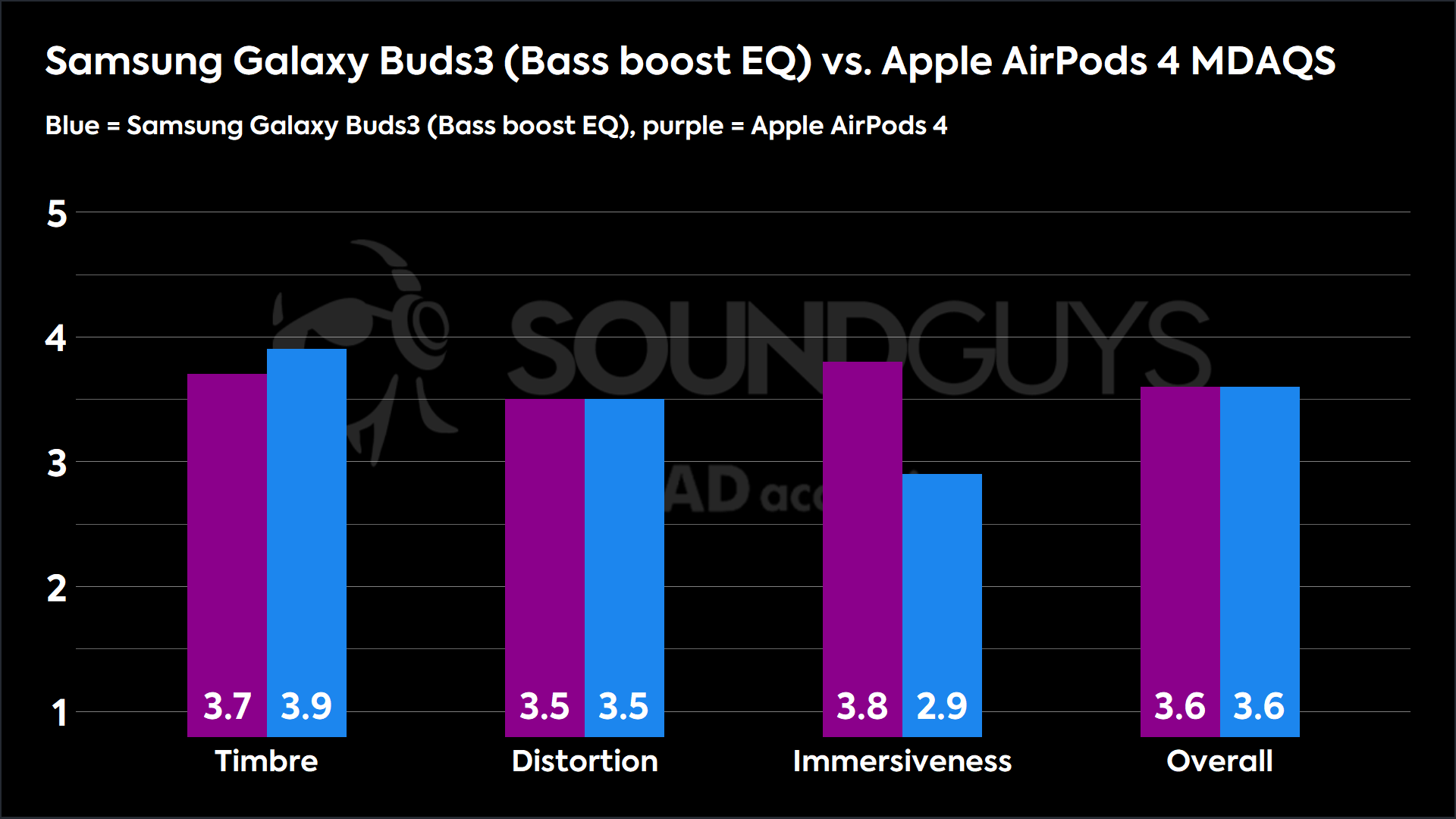
Since unsealed designs tend to struggle with bass, the results of an unsealed earbud will appear low to many. That’s really fine for this category, as the chart above should illustrate. Some product categories simply have some difficulties that make high scores unlikely with a typical fit, and unsealed earbuds are exactly that.
- Timbre (MOS-T) represents how faithfully the headphones reproduce the frequency spectrum and temporal resolution (timing information).
- Distortion (MOS-D) represents non-linearities and added noise: higher scores mean cleaner reproduction.
- Immersiveness (MOS-I) represents perceived source width and positioning: how well virtual sound sources are defined in three-dimensional space.
Can you use the AirPods 4 with Active Noise Cancellation for phone calls?
Just like every other iteration of Apple AirPods, the AirPods 4 with Active Noise Cancellation can be used for phone calls. There are a few upgrades though, including the AAC-ELD speech codec for improved connection quality. You can also now use Spatial Audio while in a group FaceTime call with the AirPods 4, which makes it sound as though each voice is located in a different position in space.
The AirPods rely on AI processing that takes place on your iPhone to filter out background noise while you are on a call. For that reason, the AirPods 4 microphones perform better when connected to an iPhone than when connected to other devices. If you’d like a good idea of how you’d sound over a phone call, listen to our microphone samples below, which were recorded while paired to an iPhone.
AirPods 4 with Active Noise Cancellation microphone demo (Ideal conditions):
How does the microphone sound to you?
AirPods 4 with Active Noise Cancellation microphone demo (Office conditions):
AirPods 4 with Active Noise Cancellation microphone demo (Street conditions):
AirPods 4 with Active Noise Cancellation microphone demo (Windy conditions):
AirPods 4 with Active Noise Cancellation microphone demo (Reverberant space):
The AirPods 4 with Active Noise Cancellation seem to do quite well with typical environments that you’d use your phone in, even if the reproduction isn’t always perfect. We’re not sure why the cutouts happened, but it’s probably not likely to happen if your phone is in your pocket.
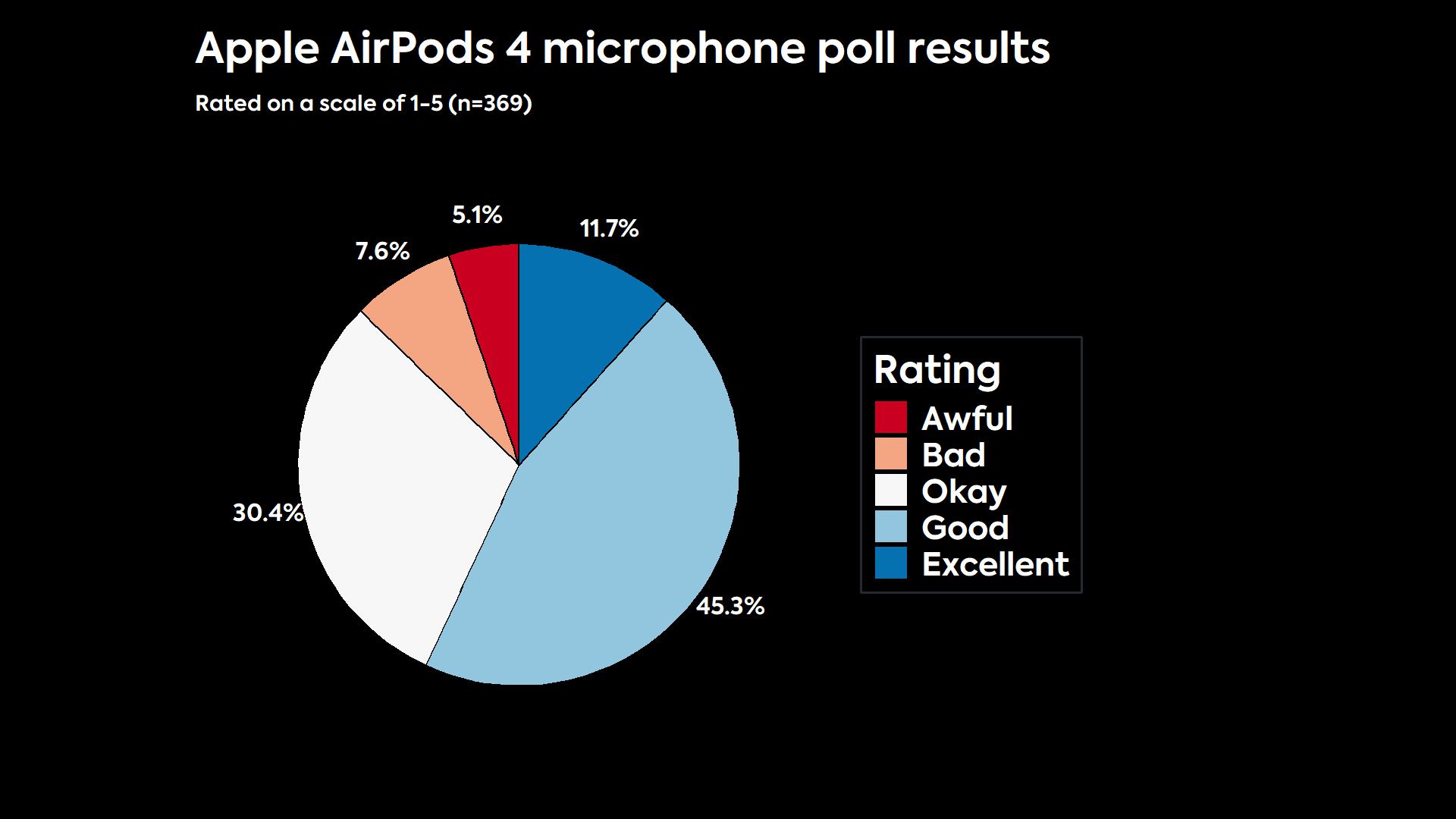
So far, our readers have rated the mic of the AirPods 4 and AirPods 4 with Noise Cancellation positively, with a Mean Opinion Score of 3.5, and a median score of 4.
Should you buy the AirPods 4 with Active Noise Cancellation?
If you’re a fan of the unsealed earbuds design, you’ll like the AirPods 4 with Active Noise Cancellation. However, just like every other model of AirPods, they lose a lot of features if you use them with a source device that isn’t an iPhone or Mac. iPhone users will likely love the AirPods 4 with Active Noise Cancellation for their integrations, software support, and seamless use within the Apple walled garden.
We were pleasantly surprised by the noise canceling performance of these earbuds, even if it doesn’t compare to the best noise canceling earbuds on the market.

Though the design of the earbuds fit our test head better, there’s no guarantee that they’ll fit your ears because there’s no secondary feature to secure the earbuds outside of the lollipop stem. We’d recommend these earbuds more for casual listeners than workout junkies or critical listeners. If you’re able to try on the AirPods 4 with Active Noise Cancellation before you buy, we highly recommend you do so.
How do the AirPods 4 with Active Noise Cancellation compare to the Apple AirPods Pro 2?
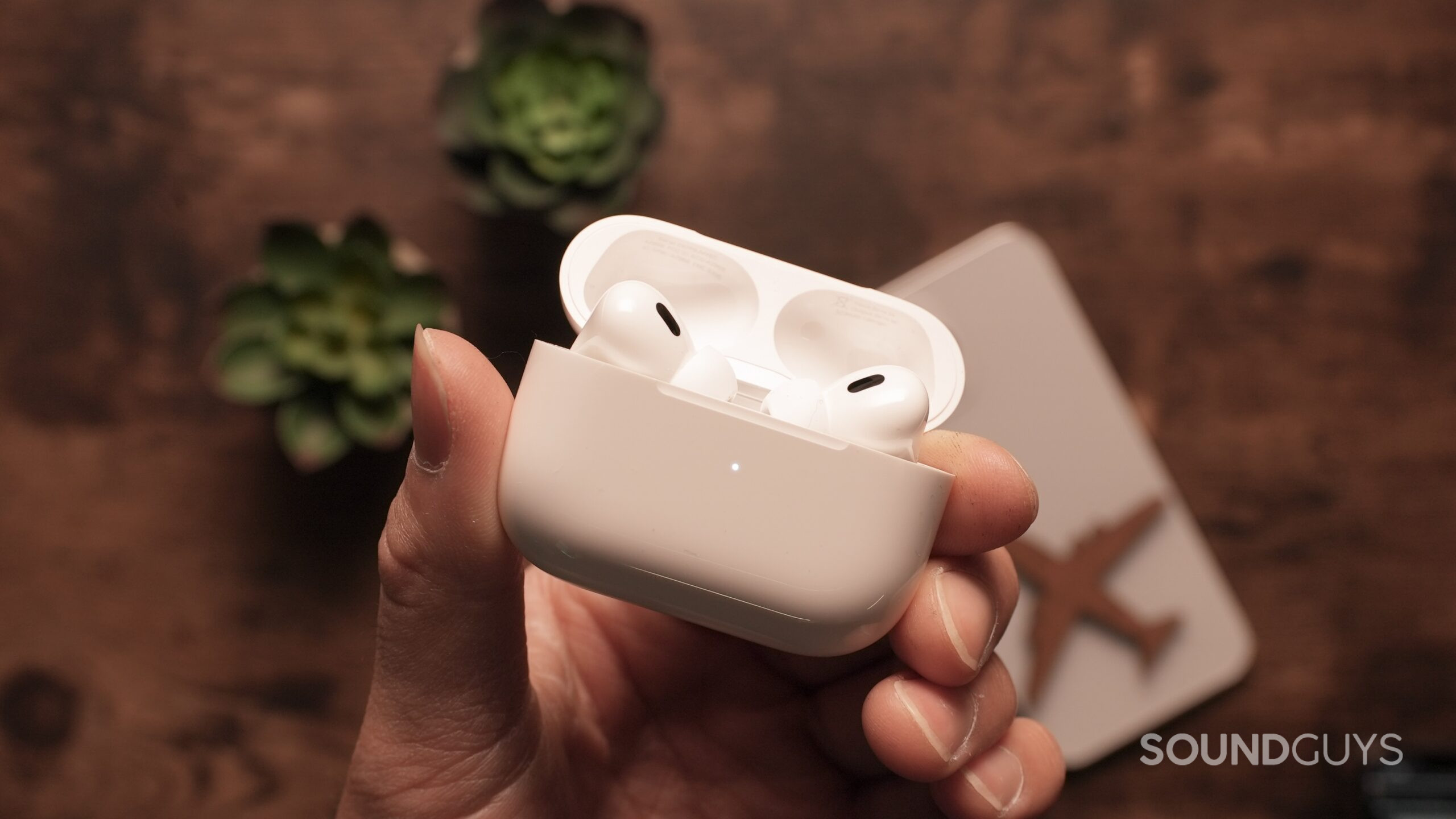
In our AirPods 4 with Active Noise Cancellation vs AirPods Pro 2 comparison, we found that the decision comes down to whether or not you want ear tips. Since the AirPods Pro 2 come with four different sizes of ear tips, you are more likely to attain a comfortable and secure fit in your ears. Those ear tips also contribute to improved noise cancellation and more consistent sound quality.
The features are largely the same, since both have the H2 chip. The one exception is that only the AirPods Pro 2 support hearing aid functionality. If you have mild to moderate hearing loss, you’ll definitely want to go for the AirPods Pro 2.

What should you get instead of the AirPods 4 with Active Noise Cancellation?
If you are willing to look beyond the Apple walls, you can find some really good alternative options. But the best one is the Sony LinkBuds Fit ($178 at Amazon). These earbuds do make a seal, but one so gentle that it’s often hard to believe that it’s even there. This should appeal to Android users who like AirPods, but aren’t willing to sacrifice a lot of function just to keep their phone.
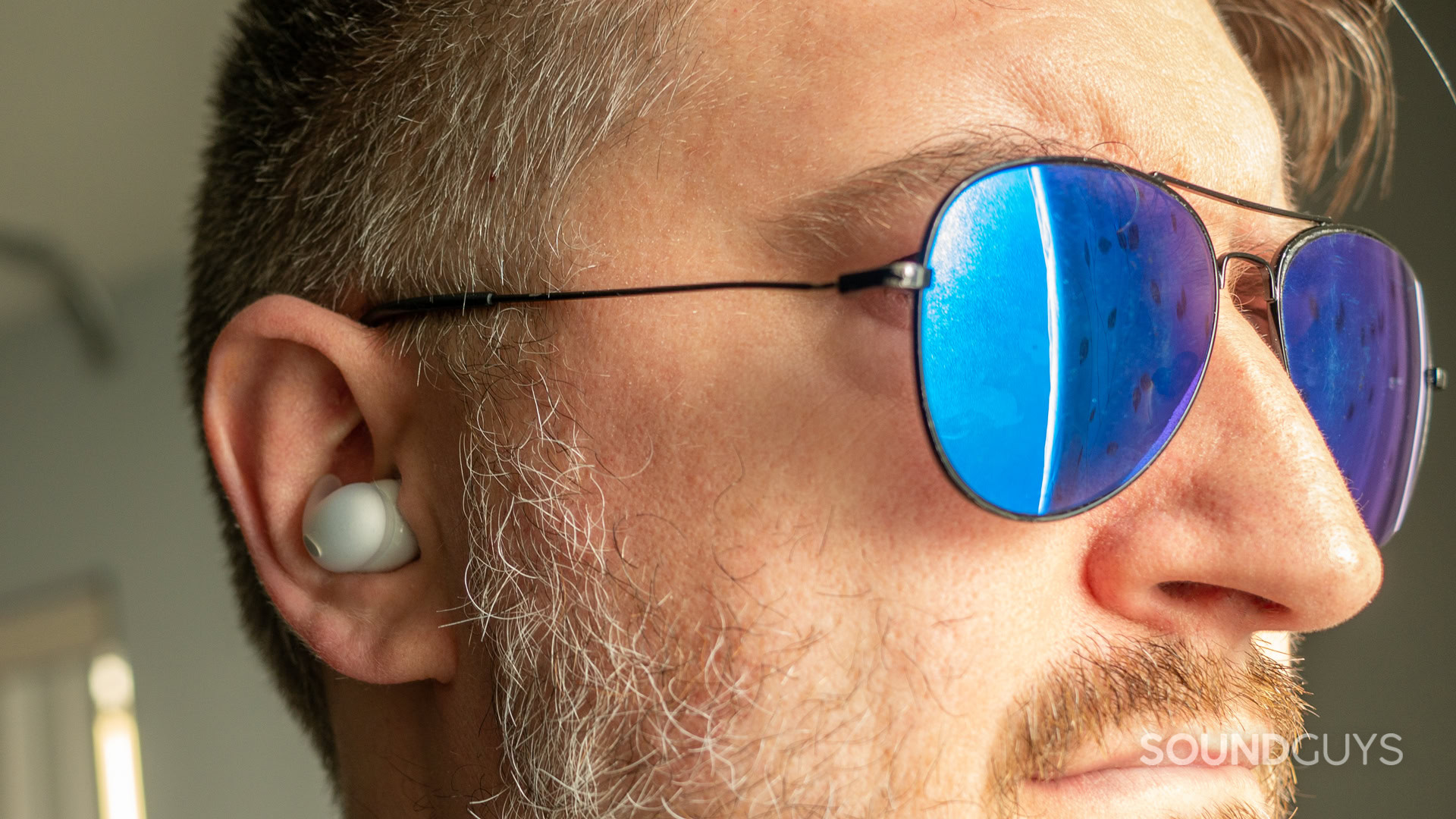
Another of our favorites are the Nothing Ear, $149 at Amazon. These earbuds offer great sound quality, noise canceling, and features, at a reasonable price. That said, they do have silicon ear tips.
If you really like the design of the AirPods, but aren’t sold on the Apple ecosystem, you can consider the Samsung Galaxy Buds3, $102 at Amazon. They look similar enough to AirPods that you could probably fool your friends from a distance.
Frequently asked questions
Yes, the AirPods 4 with Active Noise Cancellation have a transparency mode to amplify surrounding noise.
Since the AirPods 4 with Active Noise Cancellation have limited durability and no ear tips or fins for a secure fit, they are not ideal for running and working out. We recommend you take a look at the best workout earbuds instead.
Yes, you can pair the AirPods 4 with Active Noise Cancellation to an Android phone for basic playback functionality. You will, however, lose any iOS-specific features like spatial audio.
Thank you for being part of our community. Read our Comment Policy before posting.